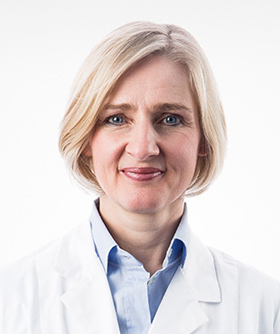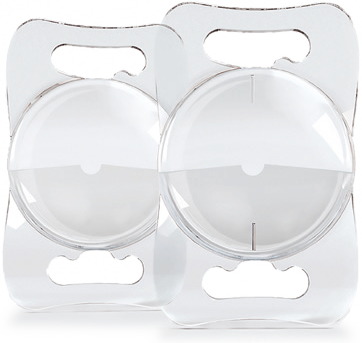Hohe Patientenzufriedenheit nach MIOL-Implantation der LENTIS Mplus
Prof. Dr. med. Maya Müller über Ihre Praxiserfahrung mit den segmentförmigen Multifokallinsen von Teleon.
“During my 25 years’ experience in cataract surgery I have seen many changes in IOL development. At Pallas Clinics we have been using the Teleon lens family since 2014 and gained our experience from over 2000 implanted lenses. Patient expectations are very high. Today we can offer a large variety of lens models with different near additions, which, as customized versions, also allow toric compensation of up to 12 diopters. Therefore, we can offer a whole spectrum of options to cover the patients’ needs. After diagnosis and biometry, we offer our patients who want to be spectacle-free, a separate consultation with our trained and experienced optometrists. Pupillometry, topography and wavefront analysis are performed again, the wishes of the patient are once more discussed and the options presented. We have had very good results with this refinement process. Overall, it is estimated that around 30% of cataract indications are suitable for multifocal lens implantation. In our patient population we see a higher demand for these types of lenses and our implantation rate is also slightly above average. The majority of patients who come to us with the desire to be spectacle-free gladly accept the higher cost. For the best available lens optic they would even be willing to pay more – we hear that more often now. The advantage of the segment design Mplus lens is the high visual acuity with a very large optical zone in the distance segment (55%) and a large optical near segment. Compared to the diffractive artificial lenses we used in the past, the segment lenses cause significantly less glare and halos. The patients are happy and it’s better for us as well. My patients who have been implanted with one of these Mplus IOLs are very satisfied; night driving and reading are also possible. Sometimes we prescribe reading glasses around +1.00 diopter. Of course, there are always patients whose expectations are not completely met. In these cases, we reassess their needs to determine, whether we have targeted the refraction correctly and whether a correction of the residual refraction is necessary. The most common problem is postoperative dry eye. If you deal with all these issues, a high percentage of these patients will also be very satisfied. The service provided by Mediconsult is excellent. We are very satisfied with the direct communication with Mediconsult and appreciate the advice in case of questions as well as the additional support with lens calculations.”

Prof. Dr. med. Maya Müller
Chefärztin der Augenheilkunde

